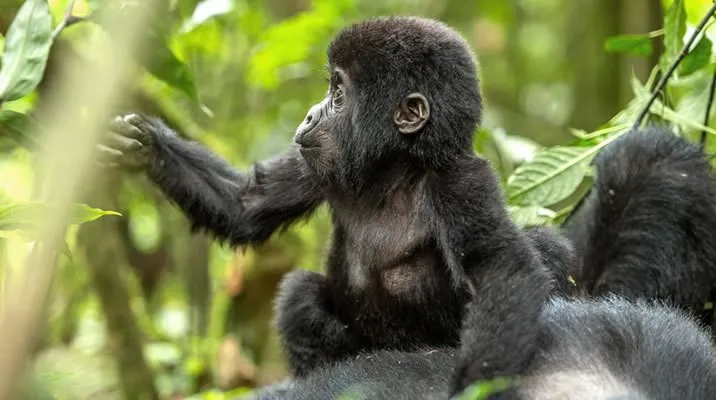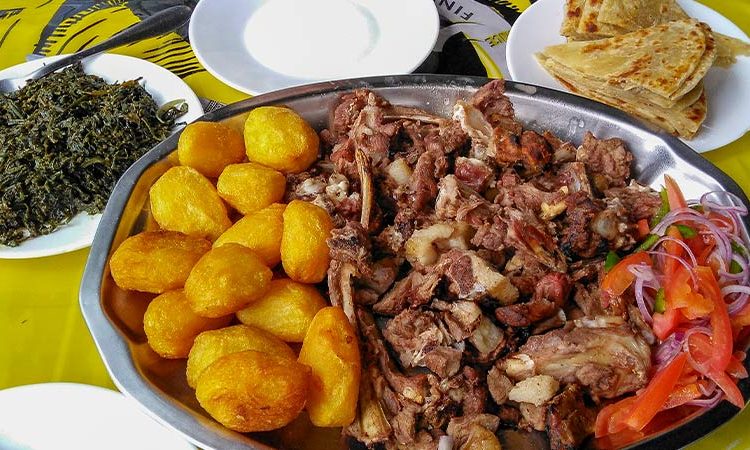- GET IN TOUCH WITH US:
- +256 753518160
- +256 777842166
- info@experiyatourcompany.com

How much should I budget for a 10-day safari in Uganda?
November 6, 2025
What’s the rainy season like in Uganda?
November 6, 2025What’s the Best Time of Year to Visit Uganda?
Uganda, fondly referred to as the “Pearl of Africa,” is one of the incredible travel destinations on the continent. From misty-covered mountains in Bwindi Impenetrable Forest to sprawling savannas in Queen Elizabeth National Park, Uganda offers adventure, wildlife, and breathtaking natural beauty all year round. Yet, if you’re planning a safari, gorilla trek, or cultural tour, one question inevitably arises: What’s the best time of year to pay a visit to Uganda?
It all depends on what you want to experience. Uganda is endowed with a mild equatorial climate and, therefore, can be visited any time of the year. Nonetheless, there are certain months of the year when the weather and wildlife activity, combined with travel conditions, create the most ideal safari experiences. Here is a guide through the seasons in Uganda, how they affect travel, and what each period offers to help you make your decision.
Uganda’s Climate in a Nutshell
Because much of Uganda is between 1,000 and 2,500 meters above sea level, despite lying on the equator, temperatures remain fairly constant. The result is a warm and generally temperate climate throughout the year. Daytime temperatures average between 24°C and 30°C (75–86°F), while at night, temperatures can drop to around 15°C (59°F), especially in the high-altitude areas like Bwindi or the Rwenzori Mountains.
Instead of the four traditional seasons which other temperate zones express, Uganda has two main kinds of weather: dry seasons and rainy seasons.
Dry Seasons: December to February, and June to September
Rainy Seasons: March to May, and October to November
Each season has its own advantages, depending on whether you are traveling for gorilla trekking, birdwatching, or classic game drives.
Dry Seasons: The Best Travel Periods in Uganda
Generally speaking, the dry seasons are considered the best time to visit Uganda, be it for safaris or gorilla trekking. Roads are more accessible, and hiking trails easier to negotiate, while wildlife tends to congregate around water sources, making them easier to spot.
June to September – The Peak Safari Season
This is the longest and most popular dry season for Uganda, hence referred to as the high season. During these months, the country enjoys abundant sunshine, minimal rainfall, and ideal conditions for outdoor adventures.
Why visit in June–September:
Gorilla Trekking: Forest trails in Bwindi Impenetrable Forest and Mgahinga Gorilla National Park are dry, thus making the treks more comfortable. Visibility in the forest is perfect, and the gorillas are usually active, often feeding near the lower slopes.
Wildlife Viewing: In parks like Queen Elizabeth, Murchison Falls, and Lake Mburo, animals cluster around waterholes and rivers, making for fantastic game viewing. You can expect to see elephants, lions, hippos, and buffalo in abundance.
Birdwatching: Although not the peak of migration, bird life is still present and active; resident species are easily seen in open habitats.
Comfortable Weather: Skies are mostly clear, and the humidity is low, perfect for photography.
Because this is peak tourist season, it’s best to book accommodation and gorilla permits some months in advance.

December to February – A Second Dry Season
December, January, and February bring along another dry spell, which is way shorter than the middle-of-the-year season. It is a wonderful time to visit if you prefer fewer tourists but still enjoy decent weather.
Why visit in December–February:
Perfect for Gorilla Trekking: Trails are generally dry, and mountain gorillas are easily accessible.
Excellent game drives: Grasses in the savannah parks are shorter, thereby making it easier to spot the predators and grazing herbivores.
Ideal for Adventure: Rafting along the white-water Nile and hiking in the regions of Rwenzori or Mount Elgon is particularly pleasant due to minimal rainfall.
Warmer Temperatures: Lowlying areas like Murchison Falls and Lake Albert can get warm; however, areas at a higher altitude are pleasantly cooler.
This period also corresponds to the festive season, making it an excellent time for family safaris or a New Year adventure in Africa.
The Rainy Seasons: Lush, Quiet, and Rewarding
Rainy seasons, from March to May and then October to November, may sound unappealing for Uganda, but they have their own magic. The rains are usually short and heavy; they often fall in the afternoon, which means that mornings and evenings are usually clear. In these months, the country bursts into life: landscapes become emerald green, waterfalls swell, and the air feels crisp and pure.
March to May – The Long Rainy Season
The wettest months in Uganda are March to May: most of the country sees high levels of rainfall during this time. This means that rural roads are often muddy, and many lodges lower their rates due to a decrease in tourist volume. For travelers who are not deterred by rain, it’s an incredibly rewarding time.
Why Visit in March–May:
Scenic Beauty: The countryside is lush and green due to fresh vegetation and full rivers.
Budget-friendly: In most instances, lodges, tours, and car rentals have some discounts available; thus, it’s suitable for travelers on a tighter budget.
Fewer Tourists: You will go to less crowded parks and lodges, a more quiet experience in nature.
Photography Paradise: The rain brings with it lots of dramatic skies and colorful landscapes, perfect for photographers.
While some trails may be slippery during gorilla trekking, the experienced guides ensure your safety, and the forest itself feels even more magical under the soft mist and rain.
October to November – The Short Rains
October–November is actually a transitional period in weather, with periods of light rains that recharge the environment without seriously affecting travelers. It is also one of the best periods for bird-watching, as several species migrate from Europe and northern Africa.
Why Visit in October–November:
Prime Birdwatching Season: This is a time when Uganda’s birdlife is at its best. The shoebill stork, African jacana, and colorful kingfishers are easier to spot.
Comfortable weather: moderate rainfall, pleasant temperature, and accessibility to national parks.
Fewer Tourists, Lower Prices: You’ll find better availability for lodges and permits at more affordable rates.
If you don’t mind an afternoon rain shower every now and then, this season offers a blend of affordability, beauty, and tranquility.
Best Time for Specific Activities
Different travelers come to Uganda for different experiences, and the best time to go can vary slightly depending on your priorities.
1. Gorilla Trekking
Best Months: June–September and December–February
While gorilla trekking is available year-round, the dry seasons are the most comfortable and reliable times to visit: trails in Bwindi and Mgahinga are less slippery, and photography conditions are ideal. Yet rainy-season treks (especially in April or November) often provide more intimate experiences since fewer tourists are around.
2. Wildlife Safaris
Best Months: June–October and January–February
Wildlife is easier to spot during dry seasons when animals congregate in areas with water. Queen Elizabeth, Murchison Falls, and Kidepo Valley National Parks are some of the most rewarding parks during such times.
3. Birdwatching
Best Months: October–April
More than 1,000 bird species are found in Uganda, including many migrants arriving during the northern winter. The short rainy season from October to November is the peak of bird activity.
4. Hiking and Mountain Climbing
Best Months: June–August and December–February
Dry weather provides stable conditions for hiking in the Rwenzori Mountains, Mount Elgon, or Sipi Falls. The trails are firm, and visibility is excellent for photography.
5. Cultural Experiences and Festivals
Best Months: Year-round
Such cultural interests include visits to the Batwa people found around Bwindi, Kampala’s nightlife, and traditional music shows, which are enjoyable at any time of the year.
Temperature Overview by Region
Central (Kampala, Entebbe, Jinja): 20°C-30°C all year, with short showers in April and November.
Western: Bwindi, Queen Elizabeth, Fort Portal – cooler, especially at night; averages 15°C–25°C. Northern (Kidepo, Murchison Falls): Hot and dry, reaching peak temperatures of up to about 35°C. Eastern-Mt. Elgon, Sipi Falls: Generally moist with occasional rainfall; excellent for hiking all year round. When Not to Visit There’s really no “bad” time to visit Uganda, but if you want to avoid heavy rain and challenging road conditions, it’s best to skip the peak of the long rains (April–May), especially if your itinerary involves long road transfers or remote parks.
What’s the best time of year to visit Uganda?
For most travelers, the answer is during the dry seasons, June to September and December to February, when the weather is clear and it’s easiest to see a wealth of wildlife and go on comfortable gorilla treks. Yet, Uganda’s beauty isn’t limited to any one season. Even on rainy days, the country feels different, fresh, and with an enchanting magic of its own. It’s best to plan your trip around what you want to see most: anything from gorilla trekking, photography, birdwatching, or simply exposure to some of the country’s great natural diversity.
It is always advisable to have a perfectly timed and well-organized journey by booking with a trusted local expert. Experiya Tour Company creates tailor-made Uganda safaris, hence making sure that your trip aligns with the best seasons for your chosen activities. With professional guides, comfortable vehicles, and insider knowledge of the parks, Experiya provides you with all it takes to have an experience that’s seamless, safe, and unforgettable regardless of when you choose to visit.




